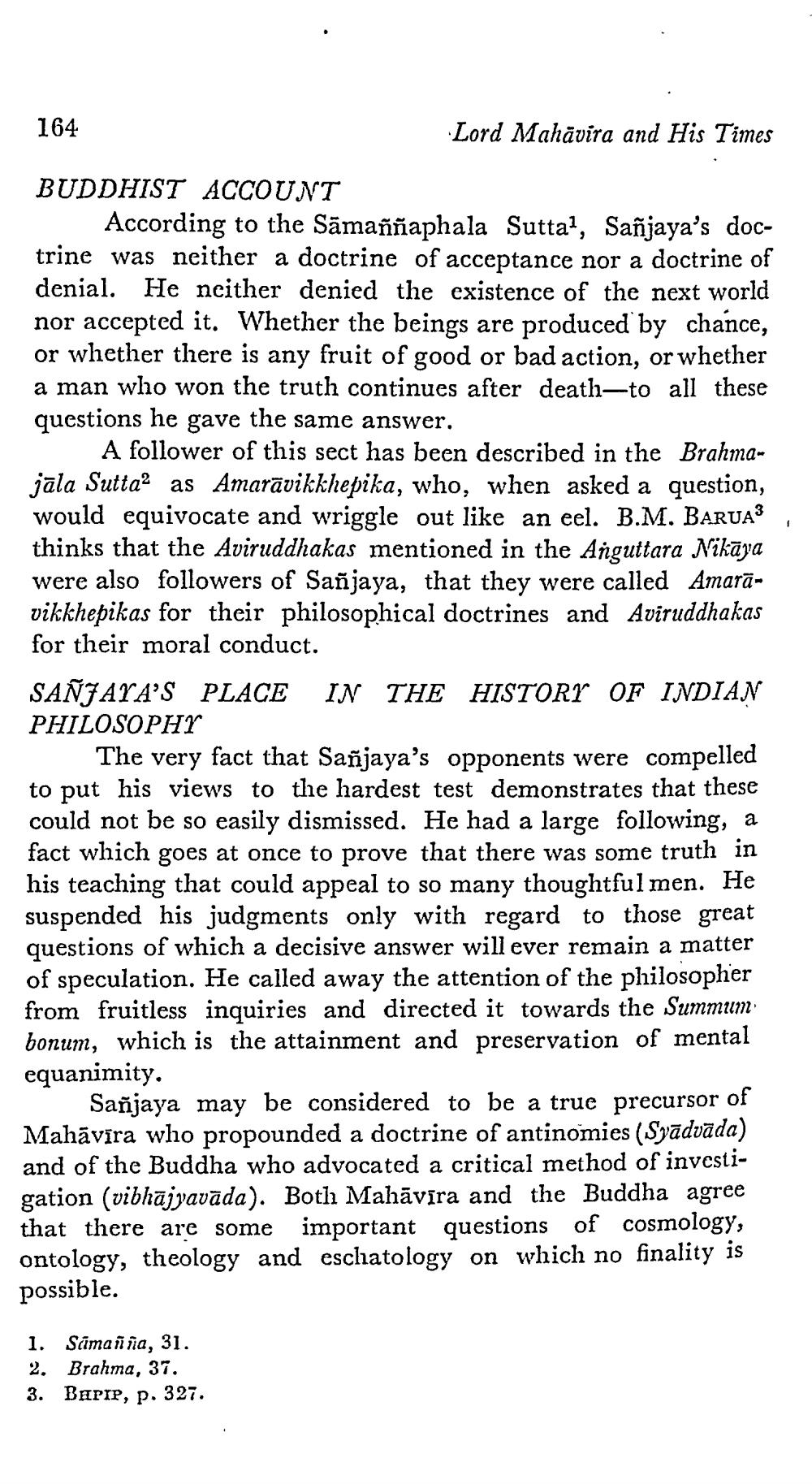________________
164
Lord Mahāvira and His Times BUDDHIST ACCOUNT
According to the Sāmaññaphala Sutta?, Sañjaya's doctrine was neither a doctrine of acceptance nor a doctrine of denial. He neither denied the existence of the next world nor accepted it. Whether the beings are produced by chance, or whether there is any fruit of good or bad action, or whether a man who won the truth continues after death—to all these questions he gave the same answer.
A follower of this sect has been described in the Brahmajāla Suttaa as Amarāvikkhepika, who, when asked a question, would equivocate and wriggle out like an eel. B.M. BARUA thinks that the Aviruddhakas mentioned in the Anguttara Nikāya were also followers of Sañjaya, that they were called Amarāvikkhepikas for their philosophical doctrines and Aviruddhakas for their moral conduct. SAÑJAYA'S PLACE IN THE HISTORY OF INDIAN PHILOSOPHY
The very fact that Sanjaya's opponents were compelled to put his views to the hardest test demonstrates that these could not be so easily dismissed. He had a large following, a fact which goes at once to prove that there was some truth in his teaching that could appeal to so many thoughtful men. He suspended his judgments only with regard to those great questions of which a decisive answer will ever remain a matter of speculation. He called away the attention of the philosopher from fruitless inquiries and directed it towards the Summum bonum, which is the attainment and preservation of mental equanimity.
Sañjaya may be considered to be a true precursor of Mahāvīra who propounded a doctrine of antinomies (Syadvada) and of the Buddha who advocated a critical method of investigation (vibhājyavāda). Both Mahāvīra and the Buddha agree that there are some important questions of cosmology, ontology, theology and eschatology on which no finality is possible.
1. Samaína, 31. 2. Brahma, 37. 3. BarIP, p. 327.




